If you are considering buying a portable generator, there are certain things you need to keep in mind. And one of them is the accessories that might and might not come with the generator.
Even though you will get some accessories or maintenance kit with the initial purchase but with time it needed to be replaced.
And sometimes you need to be aware of what accessories are necessary for your situation and make those purchases separately.
The 10 Necessary Accessories For Portable Generators You Need
1. Generator Transfer Switches
Well, I can’t stress enough how important a transfer switch is in fact it is one of the top generator accessories! It is one of those generator accessories that you must consider having for your home backup generators and RV generators.
When you use your generator, the transfer switch switches the load from the generator to the main utility power source.
In the case of portable generators, it changes the mains electricity supply directly to the generator and vice versa. Thus a transfer switch prevents having two power sources feeding into the circuit at the same time.
Cause that is extremely dangerous and can even be deadly. In the United States, a transfer switch is a legal requirement for a portable generator.
Also, I’d suggest you buy a transfer switch kit.
Automatic Transfer Switches
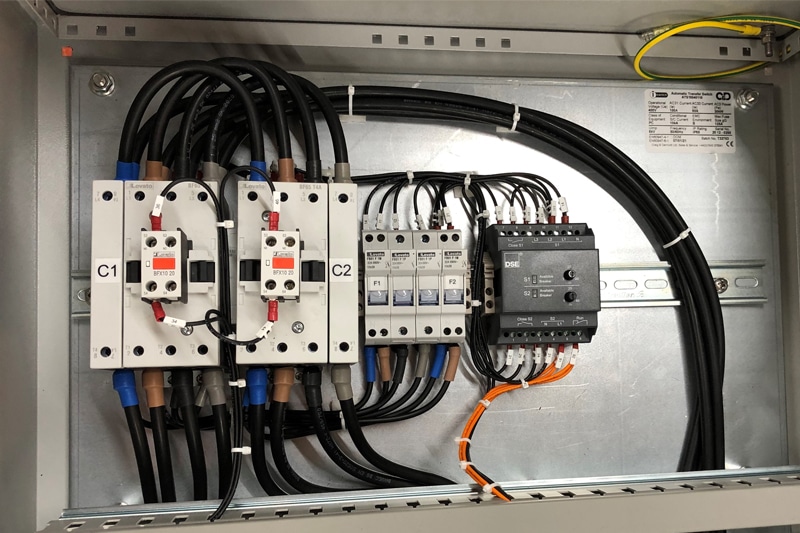
It is programmable depending on the size of your generator. There’s no need to flip the switch, it self-activates the connected portable generator. The electrical load is transferred automatically.
And when the regular electricity supply comes back on it automatically shuts off the portable generator. This is the best option for places that needs electricity to constantly stay on. This makes switching electricity a hands-off experience.
Manual Transfer Switches
It does not automatically change electricity sources. You have to flip a switch when there is a power outage to transfer the load to and from the generator.
But You need to follow the instructions of your technician once they have installed the switch as changing from the main electricity to the portable generator power is a precise process.
The type of switch you need mostly depends on your preferences and budget.
2. Fuel Stabilizer
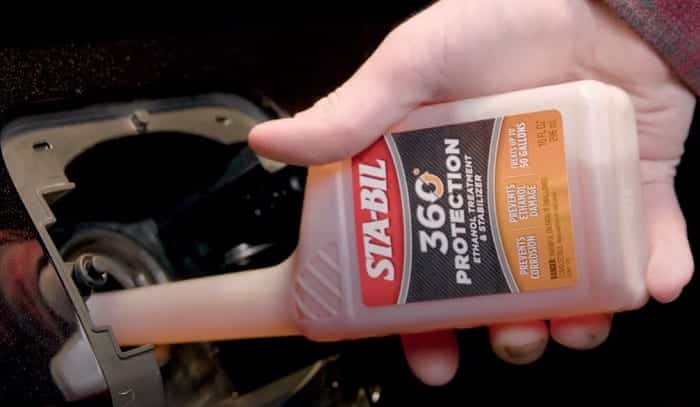
The fuel stabilizer is one of the most essential accessories for a portable generator that run on gasoline or diesel.
It keeps the fuel inside the tank in good condition by preventing the fuel from turning into gum and causing corrosion.
Without a fuel stabilizer, the fuel tank of your generator must be drained when it’s not in use which may seem like a hassle for many models. That’s why getting it can be a better option.
Add the fuel stabilizer at the same time as the generator is being refueled cause the stabilizer cannot make stale fuel fresh again. And once added simultaneously, the fuel stabilizer will keep the fuel fresh for several months.
3. Maintenance Kit
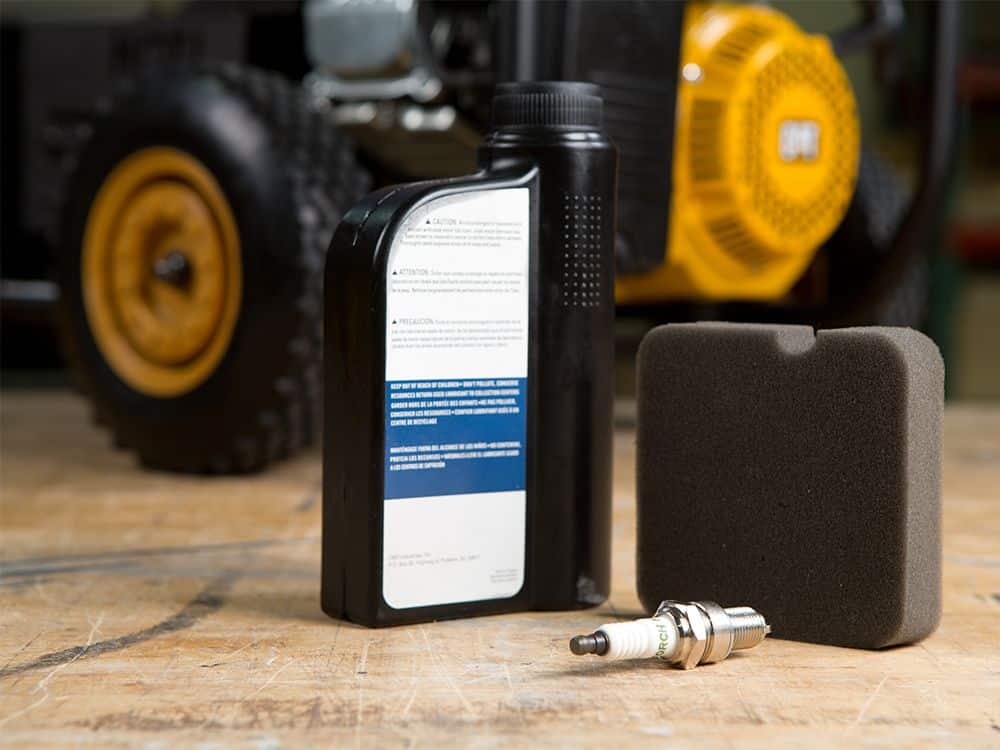
You may be surprised to know that generators are engines. And like any engine, a standby generator requires regular Maintenance. A generator with push-start or electrical start needs to be checked daily if the battery is well.
Make sure the battery is not damaged, corroded, or leaking. So servicing is needed to make sure everything still runs smoothly.
Maintenance kits cover all the tools that are needed for portable generator service. A good maintenance kit is something that will undoubtedly keep your generator in mint condition.
What’s in The Kit?
- New spark plugs after every 100 hours of use.
- Oil to change up any dirty used-up oil (every 50 – 60 hours of use.)
- With every oil change, the oil filters should also be replaced.
- Air filters to replace dirty ones. Air filters should be replaced once or twice a year depending on how often the portable generator is used.
- Mechanical, sedimentation, magnetic, centrifugal, or high-efficiency oil filters to transfer excess heat and help cool the generator.
- A pre-cleaner protects the generator from dust, dirt, and other pollutants.
- A chamois cloth is used to clean the surface and other components
- Preventative maintenance reminder stickers
- A funnel to pour oil into the fuel tank.
As a rule of thumb, you should perform maintenance on your portable generator.
- Check for any leaks ideally once a month while cleaning your generator.
- Replace the air filters every six months to one year. Replace the spark plug after 100hrs of run time.
- Replace the oil filter and change the oil as well after 50-60 hours of runtime.
- Check the battery‘s general status and power.
Once a month check if there is any visible leakage or corrosion on the battery and its connection.
4. Cold Weather Kits
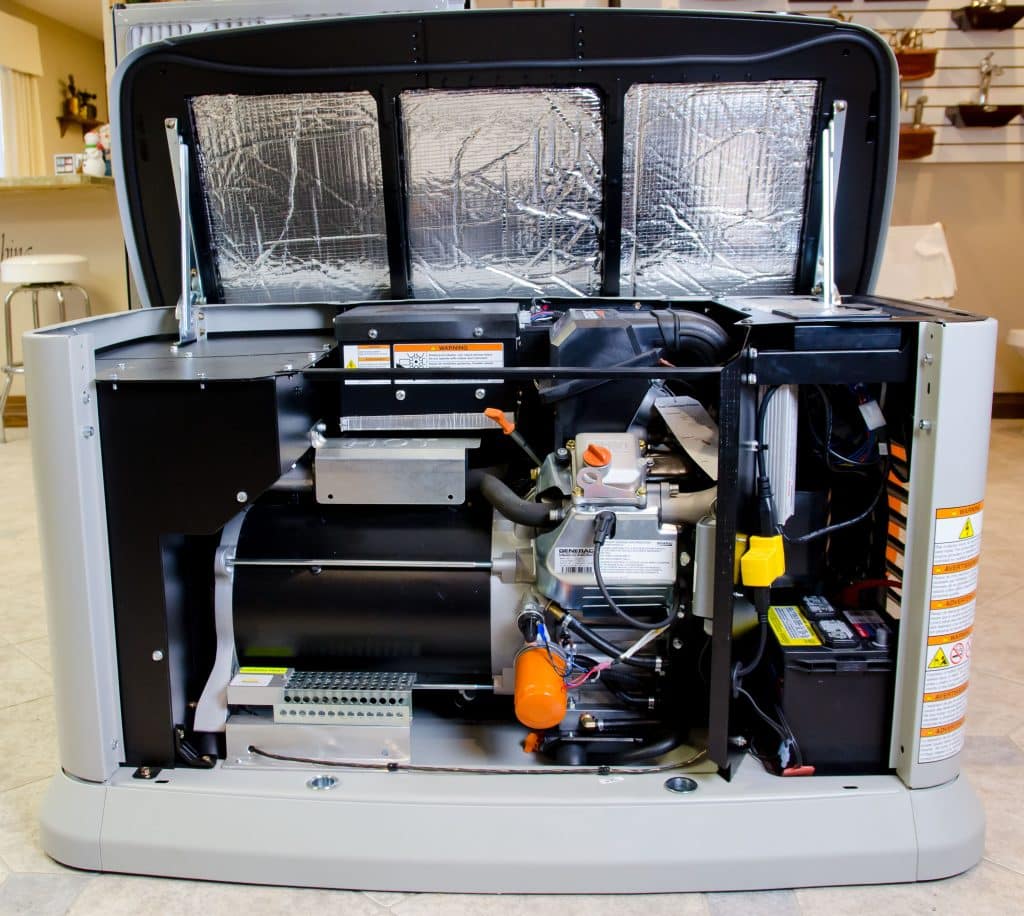
It’s an essential accessory for those who live in cold-weather areas.
What’s in The Kit?
A battery warmer: Batteries tend to stop working when the temperatures go down to minus degrees Celsius. That prevents the generator engine from moving through. A battery warmer heats up the generator‘s battery to get it up and running again.
An oil heater: Once temperatures dip below zero, the oil thickens and prevents the engine from moving through. An oil heater will heat up and liquefy the oil within the generator.
Cold weather kits can extend the life of your portable generator. Cold weather is havoc on engines or motors or any machine with moving parts.
Having a cold-weather kit gives you peace of mind by making sure you will be conveniently able to start up your generator during a power outage.
These generator accessories are essential to keep your family safe and warm in the cold weather when you need emergency backup power.
5. Heavy-Duty Extension Cords
If you are a generator owner you must already know that a fuel-powered needs to be placed 15 feet away from the building cause of the fumes released from the exhaust of the building or any window, doors, etc.
Extension cords are needed to place the connection to the main electrical panel which is attached to the building.
Generator extension cords that can handle extreme weather conditions. That’s why I recommend you get them.
Cause you definitely don’t want the connection to fail when the main electricity flow is hampered due to bad weather.
When you are connecting two generators to power together with a cable, you need to get extension cords that have the same amperage as the generator demands.
You can easily find the power cords with the required amps on the outlet of the generator.
Extension cords have two different plugs. One that fits the portable generator outlet and another one that fits in the transfer switch electrical panel.
Also, keep in mind while buying an extension cord the distance that needs to be covered. So be careful about the length of the cord. The length and thickness of the extension cord affect the resistance.
User-Friendly Accessories
6. Silencers and Mufflers
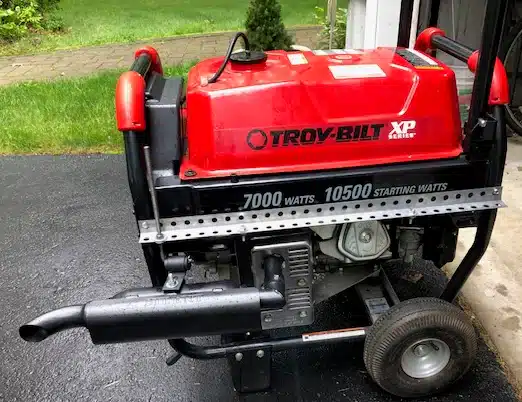
Fuel-powered portable generators are usually loud. Even though the manufacturers put a lot of thought into reducing noise the more power a generator has the more noise it gets. Most of the powerful portable designs are still louder than you’d hope. So silencers are a must-have.
If your generator is too loud for a residential area, you can add mufflers or silencers. They facilitate the quiet operation of your portable generator.
There are three designs of silencers:
Absorptive Silencers
Consists of E-glass or fiberglass insulation. Reducing high-frequency sound waves dampens the exhaust noise of the generator as it flows through the insulation.
Reactive Silencers
Consists of three chambers connected by a tube. The exhaust noise bounces between the chambers and reduces the output noise.
Combination Silencers
These silencers combine the noise reduction technology of both absorptive and reactive silencers and give the generator an exhaust noise reduction range of 20-25 dBA. The noise absorption material is fixed into the chamber design of the reactive muffler, allowing for noise reduction of all frequency designs.
If you wish to use a portable generator in public spaces like a camping ground, check whether there are any regulations on noise. This gives you an indication of how necessary it is to fit the portable generator with mufflers.
A silencer’s style, production cost, and capacity dictate the grade availability.
7. Automatic Voltage Regulator (AVR)
This is a particularly vital generator accessory to make your generator more useful, especially if you have sensitive appliances to power up.
An AVR is used to maintain the generator’s voltage at a stable state. This feature is critical for effective usage with delicate electronic devices and home appliances.
AVRs automatically maintain the generator power supply terminal voltage within the set parameters by the manufacturers. You can find these small electronic devices located on the alternator monitoring the power output
If your portable generator erratically surges or hunts, this could be an indication that the generator is under load and points to a malfunction with the AVR.
AVRs are found on all new diesel generators. Without a functioning AVR, generator output will vary widely and the new diesel generator models make sure that the generator power load to the sensitive electrical devices or site equipment remains constant.
To keep your generator in optimal condition, check for any anomalies in AVR malfunction regularly.
AVRs are found on all new diesel generators. Without a functioning AVR, generator output will vary widely and the new diesel generator models make sure that the generator power load to the sensitive electrical devices or site equipment remains constant.
8. Wheel Kits
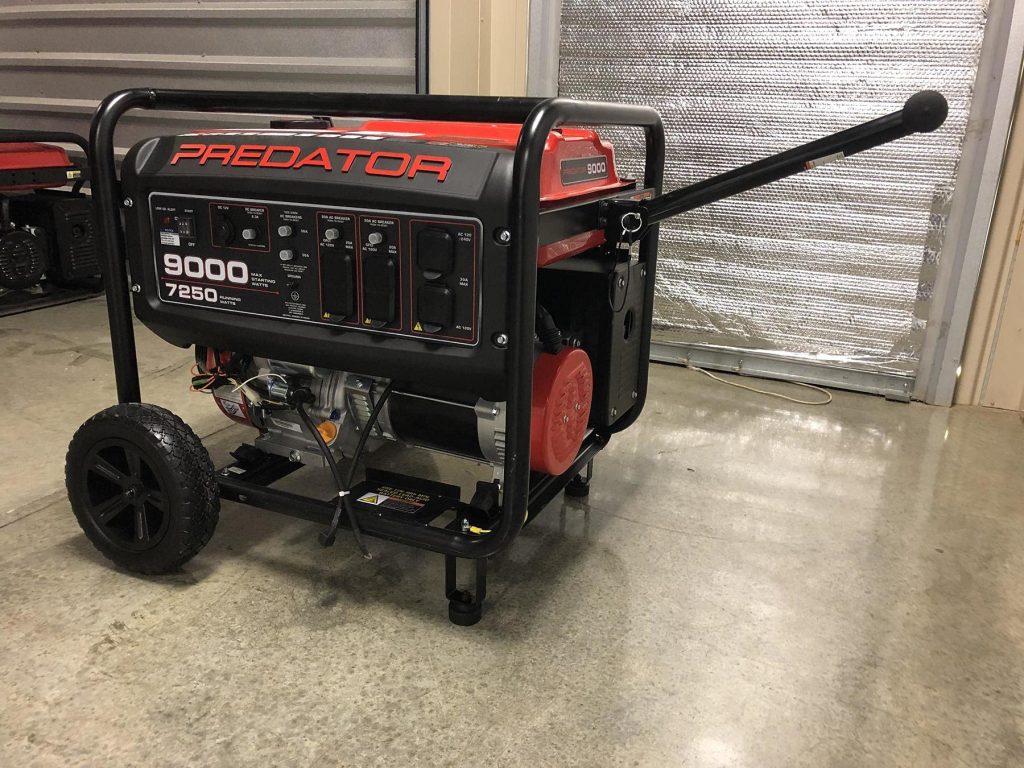
Wheels are convenient accessories for your generator. They just make life easier. If your generator lacks wheels and is heavy, fixing a wheel kit to your generator makes it easy to wheel around.
Non-flat wheels are the best as they are easy to maintain. They ensure that your generator is more portable, and manageable under any weather condition.
Pieces of wheel kit are easily stored as they’re lightweight, yet functional and robust.
9. Generator Cover– Weather/UV

A generator can get damaged when it is left exposed without a protective layer. Portable generators are not waterproof. So it can get damaged when remaining outside in weather conditions.
When using a portable generator in rainy weather, you’ll need a waterproof cover. A good generator cover is weatherproof, and this ensures that the generator is forever dry and free of dirt, dust, and rust.
Make sure to get the perfect size generator cover for maximum protection for your portable generator model.
10. A Remote Start
Ever wondered if you can run your generator without having to physically walk to its location? Well yes, you did and in this case, you can get the convenience only by getting a remote start.
A remote start allows you to run your generator by sitting in your comfort place with a push of a button.
A wireless remote start is most useful for portable generators. For elderly people or at a job site or a portable generator that is kept outdoors, remote wireless start makes life so much easy.
You will need a specialized technician who can install a system that allows for a remote wireless start. You can go for
Portable generators can benefit from various accessories that protect them, boost their efficiency, and add convenience. You can find these accessories online or in stores.
For more tips on portable generators, read my inverter generator reviews and choose the best one for you. Thanks for reading!